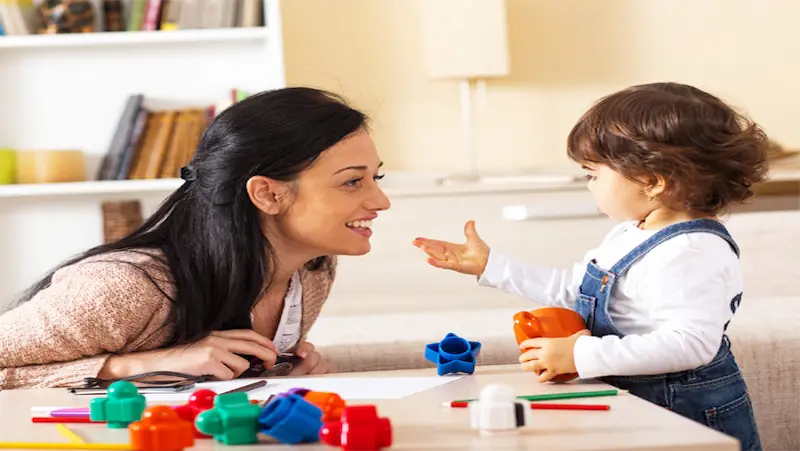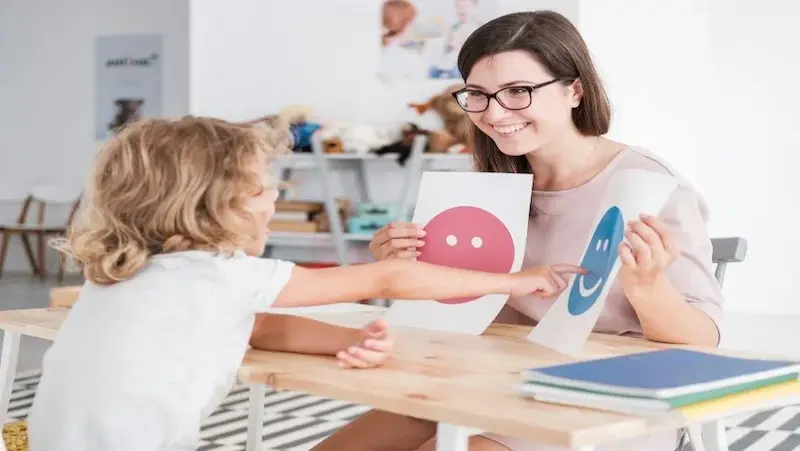Hey there, fellow parents and caregivers! Are you ready to dive into the fascinating world of communication techniques for kids? Well, you’re in for a treat. We all know that connecting with our little ones can sometimes feel like deciphering a secret code, but fear not!
In this adventure, we’ll explore some tried-and-true methods that will not only help you bridge the communication gap but also create lasting bonds with your youngsters. So, buckle up and get ready to embark on a journey of understanding, connection, and lots of heartwarming conversations!
Table of contents
Understanding Communication for Kids

Definition of Communication for Kids
Alright, picture this: Communication Techniques for Kids is like a friendly secret code that people use to share thoughts, feelings, and ideas. It’s not just words – it’s gestures, expressions, and even those adorable giggles. Basically, it’s the superpower that helps us connect and understand each other.
Importance of Developing Communication Skills in Children
Now, let’s talk about why it’s a big deal. Imagine a world where your little explorer can’t tell you about their day, their dreams, or their favorite dinosaur facts. Developing communication skills is like giving them the ultimate tool to navigate life’s twists and turns. It’s their passport to making friends, solving puzzles, and expressing their dazzling creativity.
You see, honing these skills isn’t just about chit-chat. It’s about building confidence, empathy, and understanding. When kids can express themselves clearly, they’re more likely to tackle challenges, ask questions, and embrace their uniqueness. And guess what? It’s a skill that grows with them, shaping them into fantastic storytellers, confident leaders, and kind-hearted listeners.
Verbal Communication Techniques

Encouraging Active Listening
Have you ever spoken to someone who seemed more interested in their phone than in what you were saying? It’s not a great feeling. Active listening, though, can change the entire dynamics of a conversation. Instead of merely waiting for your turn to speak, focus on understanding the speaker’s perspective. Maintain eye contact, nod in agreement, and provide verbal cues like “I see what you mean” or “That’s an interesting point.” This not only shows respect for the speaker but also encourages them to open up further.
Developing Clear Articulation
Ever stumbled upon a fascinating idea, only to struggle in explaining it to others? Clarity in articulation is essential. Avoid jargon or complex language that might confuse your audience. Instead, opt for simple yet precise words. Practice enunciating your words, focusing on both speed and volume. It’s like tuning a musical instrument – the clearer your articulation, the smoother the flow of your conversation.
Expanding Vocabulary and Language Skills
Words are your palette, and Language Development for Kids is your canvas. Expanding your vocabulary isn’t just for crossword enthusiasts; it’s key to expressing yourself better. Regularly expose yourself to diverse content – read books for kids, and articles, and listen to podcasts. When you encounter unfamiliar words, take a moment to understand their meanings.
Non-Verbal Communication Techniques

The Role of Body Language in Communication
Imagine this: you’re in a meeting, and while your colleague’s words might sound positive affirmations for kids, their crossed arms and tense posture tell a different story. That’s the magic of body language – the unspoken language that reveals what lies beneath the surface of spoken words.
When it comes to Communication Techniques for Kids, only a fraction of our message is transmitted through the words we speak. The rest is conveyed through our body and children’s language development. The tilt of our heads, the way we stand, the movements of our hands – they all contribute to the conversation.
Teaching Facial Expressions and Gestures
Ever thought about how universal a smile is? Whether you’re in Tokyo or Toronto, a smile transcends language barriers. This brings us to the fascinating world of facial expressions and gestures, a realm where even the slightest movement can convey a myriad of emotions.
Teaching these non-verbal techniques is an art for kids in itself. It’s about helping individuals become aware of their own expressions and gestures and guiding them to use these tools effectively. A furrowed brow might indicate confusion, while a nod can show agreement.
Developing Social Communication

Teaching Turn-Taking and Conversation Skills
Imagine a conversation as a lively game of catch, where the ball is your words, thought of the day for kids, and emotions. The key is knowing when to toss the ball and when to catch it. Teaching turn-taking is like handing someone their first glove and gently guiding them through the art of a smooth throw.
Start simple: encourage active listening. When you truly hear someone out, you’re not just waiting for your turn to speak – you’re connecting. Engage in engaging eye contact (pun intended), nod, and sprinkle in those “I totally get it” remarks. It’s like building a bridge between minds.
Dealing with Peer Pressure and Bullying
First off, remember that you are the author of your own story. Peer pressure? Well, it’s like being handed a script and having the power to say, “No, that’s not my line.” Be confident in your values. Saying “no” isn’t a dead end; it’s a detour toward authenticity.
And then there’s bullying, the unwelcome storm that sometimes barges in. Picture yourself as the lighthouse guiding ships through rough waters. Seek help from the trusted ships – your support system. Let your light shine, showing that kindness and resilience can weather any storm.
Parental Involvement in Communication Development

Creating a Supportive Environment at Home
1. Talk, Listen, Repeat: Engage your child in meaningful conversations. Share stories for kids, ask open-ended questions, and genuinely listen to their responses. This not only builds vocabulary but also teaches the art of attentive Communication Techniques for Kids.
2. Reading Rituals: Reading together sparks a love for language and expands vocabulary. Choose age-appropriate books and embark on adventures through words.
3. Technology Balance: While screens have their place, ensure a balanced approach. Opt for interactive activities for kids that promote conversation over passive entertainment.
Effective Parent-Child Communication Strategies
1. Be Present: Create designated times for communication, free from distractions. This sends the message that their words hold importance.
2. Validation Matters: Acknowledge your child’s feelings and thoughts. Validating their emotions fosters trust and encourages open dialogue.
3. Non-Judgmental Zone: Be a safe haven for their thoughts. Avoid criticism or jumping to conclusions, allowing them to express themselves freely.
Communication in Building Friendships

Making New Friends and Social Skills
1. Be a Listening Wizard: The most charming spell you can cast is the power of listening. When you engage in conversations, genuinely listen to what the other person is saying. Ask questions, show curiosity, and let them know that their thoughts matter.
2. Smile, the Universal Potion: A smile, my friend, is the universal language of kindness. It’s an invitation, a warm hug without words. When you approach new people with a friendly smile, you break down invisible barriers and set the stage for a beautiful friendship.
3. Shared Interests, the Friendship Elixir: Imagine finding a treasure chest of shared interests. Be it a love for hiking, reading, or trying out exotic cuisines, common passions are the threads that weave strong bonds. Seek out these gems in your interactions.
Maintaining Healthy Friendships
1. The Time-Tending Ritual: In our bustling lives, time is our most precious offering. Dedicate time to catch up, whether it’s a quick chat over the phone or a leisurely coffee date. Regular check-ins show that you value the friendship.
2. Embrace Imperfections, Yours, and Theirs: Every person is a constellation of quirks and idiosyncrasies, and that’s what makes them extraordinary. Embrace their imperfections, and remember, they’re embracing yours too.
3. Honesty, the Pillar of Trust: Healthy friendships thrive on honesty. Be it sharing your feelings, discussing misunderstandings, or even admitting when you’re wrong, honesty builds a fortress of trust that can weather any storm.
Conclusion
In the journey of fostering effective Communication Techniques for Kids in children, we’ve explored a tapestry of techniques that not only build strong connections but also lay the foundation for lifelong skills.
As we navigate the digital age, the power of meaningful dialogue and empathetic expression remains timeless. By nurturing active listening, encouraging open dialogue, and embracing the art hub for kids with non-verbal cues, we provide our kids with tools that extend far beyond words.
Frequently Asked Questions
A1: Watch for signs like struggling to form sentences, trouble following instructions, or avoiding eye contact. Consulting a speech therapist can provide insights.
A2: Yes, they are relatively common. Many children experience temporary communication challenges, but timely support and intervention can make a significant difference.
A3: Create a comfortable environment by actively listening, showing interest, and validating their feelings. Ask open-ended questions to spark meaningful conversations.
A4: Technology can offer interactive learning tools and apps that enhance vocabulary and language skills. However, balancing screen time with real-world interactions is crucial.
A5: Gradually expose them to social settings, celebrate small achievements, and teach relaxation techniques. Encouragement and patience are key.


 We are an army of educators and passionate learners from BrightChamps family, committed to providing free learning resources to kids, parents & students.
We are an army of educators and passionate learners from BrightChamps family, committed to providing free learning resources to kids, parents & students.











